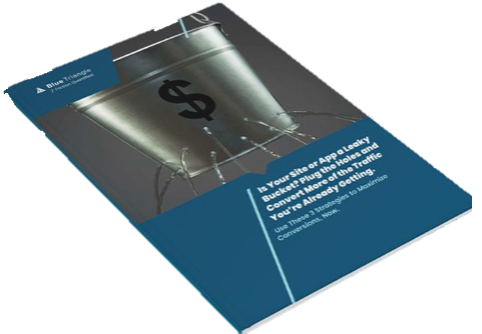Learn the fives steps to unify your team around driving costly-friction out of your digital experiences to improve conversions, revenue and customer loyalty.
Have you ever watched a team of four-year-olds play T-ball?
I remember how comical it was when my daughter played T-Ball with her cousin. At times, it was chaos, with every kid running after the ball. Other times, they became distracted by wildflowers or chased each other up a hill while the ball rolled to a stop in the middle of the field.
Sadly, the same thing often happens when companies set out to address friction in their customers' digital journeys.
That's a key point made by Amir Rozenberg, former senior director of product management at Capital One, on a recent episode of The Frictionless Experience podcast.
"I think that frictionless experiences are something that everybody believes are owned by everybody, and it's actually not owned by anyone," notes Amir. "Nobody actually owns (delivering a frictionless digital experience). Nobody has the tooling to make it an agenda item."
In the end, while nobody specifically owns frictionless digital experiences, every team has the potential to add friction to a company's digital experiences:
- Marketing may add a new feature intended to enhance the buying experience, and yet it degrades performances or fails to fire correctly on some browsers.
- E-commerce and digital teams may add a JavaScript tag to capture key metrics or display related data from a third-party company, but they may not be aware that the slow-running tag causes browsers to freeze for a frustrating few seconds.
- Dev/Ops may inadvertently code tags in the wrong order, degrading both Core Web Vitals and page speed.
- IT might employ a new Content Delivery Network (CDN) that results in poorly rendered images, inhibiting customers from seeing products clearly enough to buy confidently.
Any and all of these scenarios create friction that reduces conversion rates and costs the company substantial sums in lost revenue.
Without a unified toolset and teams aligned around prioritizing friction, quantifying its impact, and ensuring it's resolved quickly, companies risk having costly friction go unnoticed or the chaos of multiple teams attacking the problems based on siloed tools that present conflicting data.
"It's a topic everybody cares about it," Amir explains. "Everybody talks about user experience, and we want to make it delightful, but you don't have that wrench. Right?"
So how can companies prioritize frictionless digital experiences and ensure they avoid ending up with a situation where nobody and everybody owns uncovering and resolving friction? Amir provides five suggestions.
5 Ways Companies Can Focus on Frictionless Digital Experiences
1. Make Friction a Priority.
Zig Ziglar, an influential American author, salesman, and motivational speaker, once said, "The first step in solving a problem is to recognize it does exist." All websites and mobile apps suffer from some amount of friction: anything that slows or prevents a user from accomplishing their intended goal.
Friction has been proven to seriously impact conversion rates. Left unaddressed, these lost conversions can amount to millions of dollars in lost revenue monthly for large e-commerce brands. For other brands, friction-filled experiences result in losing trust and loyalty over time.
Understanding and acknowledging how costly friction can be in both immediate conversions and long-term loyalty should make it a corporate priority to address. After all, company priorities get funded. "Frictionless experience is really a key component, and I would say equal if not more important than the feature set themselves," notes Amir.
2. Link Friction to Business Outcomes.
The easiest way to get senior-level focus on delivering frictionless experiences is to quantify its impact on business outcomes. Identifying the value of each user and the key metrics each department uses to measure success will help attribute a financial metric to friction.
- What's the cost when a user fails to convert?
- What's the value of a specific workflow or transaction being completed on the site?
Defining those metrics and then using a technology solution that can quantify the impact of friction at each point in the customer journey empowers enterprises to understand the value of removing friction.
"What is the impact on the business metrics that we're trying to achieve?" agrees Amir. "We have a way to tie technological concepts such as page performance or view performance or errors or an otherwise bad experience on the page, on the mobile web into business metrics. And this really ties the experience and the teams together."
3. Involve the Development Organization in User Experience Innovation.
"Many times, the development organization are actually the ones who are advocating for improvement of the user experience because they many times use the product themselves, either in testing or with consumers or whatever it might be," notes Amir.
By presenting data-based evidence with metrics that showcase the impact of user experience improvements on the bottom line, ranging from lead generation in B2B websites to revenue growth in retail or an increase in loyalty with hospitality organizations, you can garner support for prioritizing user experience across all departments.
4. Focus on the Steps in the Journey with the Costliest Friction.
Large-scale websites have hundreds or thousands of pages with some amount of discernable friction.
This is why many developer tools that prioritize uncovering problems, like observability tools, are ill-fitted for prioritizing friction points since they often can't distinguish between red lights with minimal financial impact vs. those costing millions of dollars in lost revenue.
Consider employing a tool built specifically to quantify all the friction points so that your team can isolate the truly costly friction points from the minor issues that won't move the needle on revenue recapture. This allows resource-challenged development teams to focus their efforts on fixes that will produce the greatest return on investment.
5. Employ a Unified Dashboard Focused on Friction.
Development, IT, UX/UI, E-Commerce, Digital, and Marketing teams use different tools focused on their key metrics, resulting in conflicting data points, confusion, and debates that stand in the way of prioritizing and removing costly friction.
While observability, session replay, and marketing analytics tools may each individually shed some light on various forms of friction, they are often minor features buried deep in each tool. More importantly, the tools are rarely able to tie friction to business metrics such as conversions and revenue.
Consider employing a platform built for continuous experience optimization by uncovering, quantifying, and diagnosing causes of friction at every point in the user journey. The platform should be accessible to every team involved in the digital experience, providing a unified set of data and a view of friction, putting all teams on the same page. Debates and finger-pointing are eliminated when everyone can access a shared view of key performance and user journey metrics.
Going from T-Ball to the Big Leagues
By acknowledging the importance of uncovering and removing friction, tying it to key business metrics, involving the development team, and having the right platform that can unify teams around resolving the costliest friction points, your organization can go from being a disorganized, distracted T-Ball team to a well-oiled, friction-fighting machine driving real business impact and bottom-line improvements.

During the holiday rush, every shopper matters
Optimize the customer journey before the eCommerce event of the year.

.jpg)


